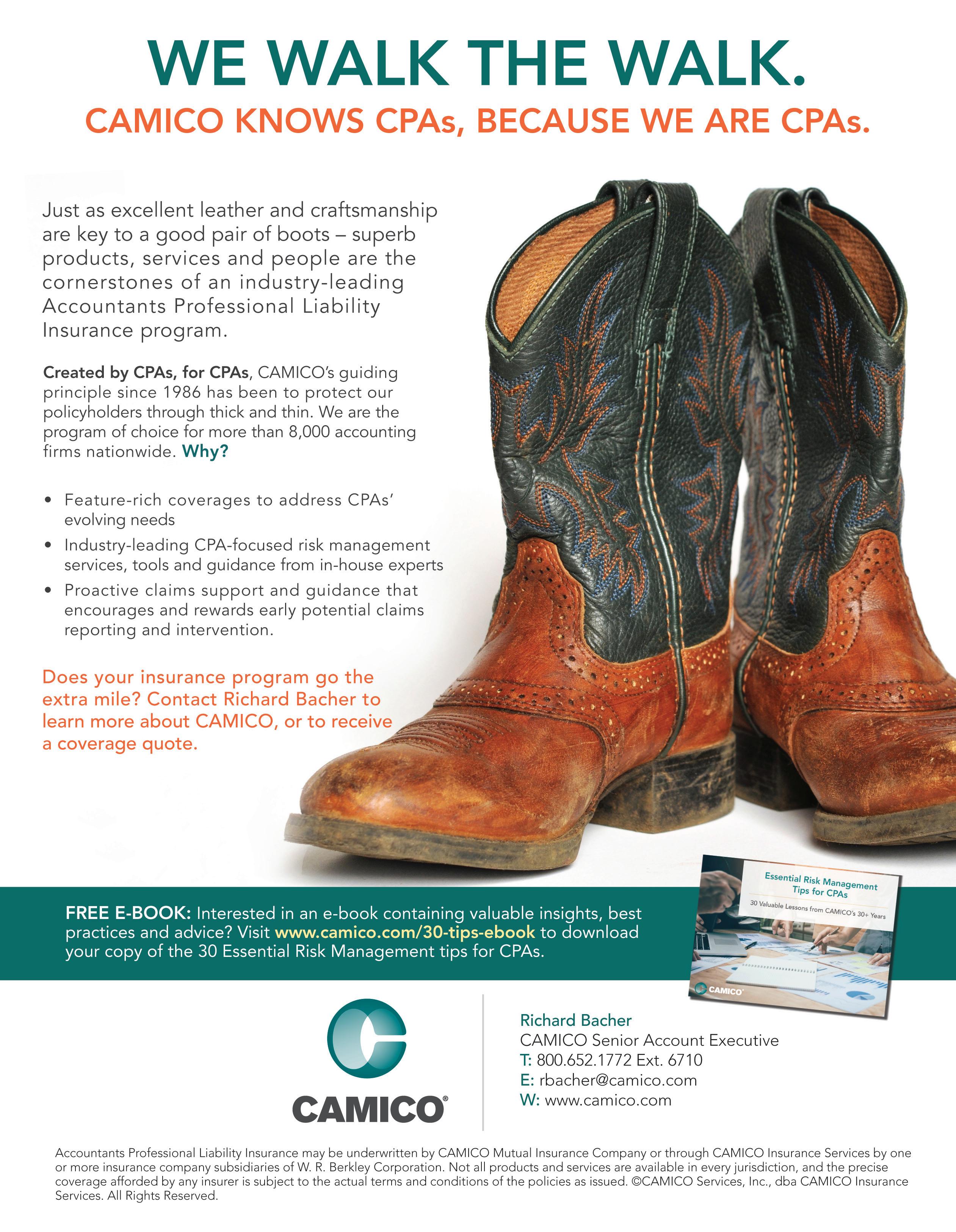
4 minute read
Accounting & Auditing
AS LIBOR’S END APPROACHES, IT’S TIME TO PLAN FOR THE TRANSITION TO NEW REFERENCE RATES
By Don Carpenter, MSAcc/CPA
For decades, the London Interbank Offered Rate (LIBOR) has been the benchmark reference rate for financial instruments around the globe. Such instruments as corporate and municipal bonds, floating rate mortgages, assetbacked securities and derivatives (such as interest rate swaps) have used LIBOR as the base rate for setting contractual obligations and determining value. But for several reasons discussed below, LIBOR is scheduled to be phased out by the beginning of 2022.
The method of determining LIBOR is actually quite straightforward and is one of the reasons market regulators see it as outdated. Each day, a group of banks, called panel banks, report their funding or borrowing rate to the Intercontinental Exchange Benchmark Administration (IBA), which then averages and adjusts them to a series of published LIBOR rates.
The rates are reported for five currencies and seven time periods spanning from overnight to 12 months. The reported rates are not strictly transactional but rely on expert judgment. It was alleged that as early as 2003, the panel banks manipulated their reporting to understate these rates in an effort to assist traders who stood to profit. Also, with the financial crisis of 2008, the number of reporting banks has declined, putting additional pressure on the veracity of the process.
U.S. dollar LIBOR reporting is scheduled to be retired at the end of 2021, but the actual date is less than certain. Rates could continue to be published beyond that date but could also end early if the number of reporting banks (currently at 16) falls below four.
With this time frame looming, the Secured Overnight Financing Rate (SOFR) will likely become the preferred replacement rate. But there are important differences between SOFR and LIBOR. SOFR is an overnight borrowing rate that does not have longer term equivalents. In addition, the quoted transactions are backed by U.S. Treasury securities and therefore lack the credit risks inherent in LIBOR cited by panel banks. For these reasons, substituting SOFR for LIBOR in existing contracts will require analysis and possible adjustment.

In an SEC Staff Statement, registrants are encouraged to conduct an inventory of existing contracts and determine:
hour of CPE credit.
LIBOR extend beyond 2021? If so, what disclosure obligations might exist with regard to risk on these contracts either individually or in the aggregate? discontinuation of LIBOR have on the operation of each contract? have fallback language that contemplates the discontinuation of LIBOR, what actions, such as proactive negotiation, might be required to mitigate risk? might replace LIBOR? What risks would this new rate introduce? Specifically for derivative instruments such as hedges of floating-rate instruments, how does a replacement rate impact effectiveness?
For new contracts, the SEC is encouraging participants to reference a rate other than LIBOR. And if LIBOR is the benchmark rate, effective fallback language should be included in the contract.
The Alternative Reference Rates Committee convened by the Federal

Editor’s Note: For a more in-depth analysis of this topic and its specific application to interest rate swap hedges, see the CPE article included in this Today’s CPA issue and earn one
Do any contracts referencing What effect will the With contracts that do not What alternative reference rate Reserve Board has developed suggested fallback language for instruments such as floating rate notes. The International Swaps and Derivatives Association (ISDA) will also include robust fallback language for swaps entered into on ISDA documentation.
In addition to risk assessment and disclosure, the benchmark interest rate can have significant ramifications with regard to accounting determinations, including modifications of debt instruments, hedge accounting, valuation model inputs and related income tax consequences. FASB has also been active in addressing transitional issues. It issued ASU 2018-16 to designate SOFR as a benchmark interest rate for hedge accounting.
Earlier this year, ASU 2020-04 was released to provide elective expedients and exceptions to GAAP where a change in the benchmark interest rate could result in a contract modification. Areas addressed include receivables and debt, leases and instruments that include embedded derivatives. Of particular interest are fair value, cash flow and net investment hedges.
The ASU provides methodologies for transitioning to a new benchmark rate without accounting for the change as a hedge termination. The ASU only applies to modifications made before Dec. 31, 2022.
It is not too early to begin planning for the transition from LIBOR to another benchmark interest rate. Businesses would be well advised to prepare an inventory of all contracts where LIBOR is referenced and determine if commitments will extend beyond 2021. If so, discussions with counterparties should be considered to address transition to a new reference rate keeping in mind the impact of such a transition upon financial reporting.
New contracts that will extend beyond 2021 should utilize a rate other than LIBOR. And finally, accounting and financial analysis personnel should review models and processes that utilize a LIBOR-based rate to determine the impact of changing to another base rate.
ABOUT THE AUTHOR:
Don Carpenter is clinical professor of accounting at Baylor University. Contact him at Don_Carpenter@ baylor.edu.











